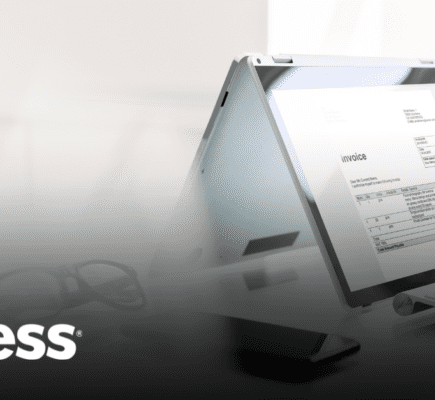
When developing a Records Management Program Implementation Plan you should have already developed a Strategic Plan (step 1) and completed a Status Check (step 2) (these two steps were presented in previous LexiTimes articles and links to these articles are below) so that you have a picture of where you’re going and where your records management program is currently.
The Records Management Program Implementation Plan is the ‘how to’ link between your current state and your desired future state.
Creating a Records Management Program Implementation Plan
This document management implementation plan is likely to be the most detailed plan and responds directly to the differences between the Strategic Plan and Status Check. For example, if your desired outcome is to have a full suite of governance documents (policies, procedures, guidelines, standards), and your status check finds that you only have an old, possibly outdated policy, then the next obvious step is to start drafting the needed documents.
Draft Information Governance Documents
This seems fairly straightforward, but it’s not quite as simple as just sitting at your computer and plugging away. You need to decide on which documents you truly need and draft the documents so that they support the end picture you’ve put together. The draft is key because these may change as you move along your implementation path and make discoveries about the organization that could change your response to implementation, and impacts the content of one or more of your information governance documents. So, the document drafting component of your plan has to take into account that the information governance documents will possibly go through many versions before final publication.
The information governance documents may include Records Management / Information Governance team position descriptions, Records Management Policy, Legal Hold Policy, Record Creation/Receipt Standard, Retention Schedule Maintenance Procedure, Information Distribution Standard, Information Protection/Security Standard, Naming Convention Standard, Imaging/Scanning Standard, Information Integrity/Reliability Standard, and Records Disposition Procedure, to name a few. Keep in mind that this is a typical and representative list only. Your list may vary depending on your specific needs.

Beyond Storage – A Comprehensive Information Management Checklist
Organizations of all kinds and sizes are finding themselves faced with an array of information management challenges. Some of these challenges, like the transformation of information technologies and the growth of data sets, have remained relatively unchanged for years.
Create a Plan for the Entire Records Management Lifecycle
The other components that will need to be addressed in your document management plan may include:
- Development of a taxonomy (if not created in conjunction with your retention schedule)
- Physical records/box storage (and possibly the use of contracted services)
- Clean-up of shared drives, clean-up of mobile storage
- Introduction of an ECM (enterprise content management) system
- Establishment of a shredding program
- Establishment of a records management ‘help desk’
- Establishment of the disposition process
- Alignment with company privacy and compliance programs
- Alignment with information technology processes/systems that impact documents and records management
- Establishment of corporate archives or alignment with an existing archives team
- Establishment of an education and training program for both an introduction and ongoing document management plan
As with the list above, your list of document management plan components will vary based on your business needs.
The implementation plan will also change based on the implementation phase. Phase I is often considered a baseline document management plan implementation. Depending on the resources you have (internal and/or external) you will have to plan accordingly. With that said a small team of 3-5 active members can have a huge impact in a single calendar year.
What to Include in a Document Management Implementation Plan
Within your plan, here are some suggested areas you’ll want to prepare for:
1) Develop initial governance documents (policies, procedures, record retention schedule, etc.)
These draft documents will help guide the implementation activities. Remember that these documents may change as you move through implementation.
2) Establish your Records Management/Information Governance services
Be prepared to inform your end-users how you can help. Let them know about your advisory services (and expertise) regarding filing supplies and storage equipment, development of procedures and guidelines (for their purpose and in supplement to the corporate level documents), support during the disposition of records, support for conversion of records from hard copy to digital formats (imaging), support in developing localized taxonomies, and any other services your organization may need as related to Records Management/Information Governance.
3) Meet with business unit (BU) heads, and complete your unit questionnaire
This is an information-gathering questionnaire that will address issues around record locations, security, staff availability, and other key areas the implementation project will touch.
4) Host individual BU pre-implementation Q&A meetings and provide software demos if applicable
This part of your overall change management process will ease the concerns of end users as they get to ask questions about the impact of Records Management/Information Governance on their daily lives.
5) Interview BU staff
Using a scripted set of questions, interview key BU staff.
6) Evaluate BU status
This will help determine records to be impacted, provide a guide regarding physical holdings, define access limitations, identify any litigation impacts, and assist in determining how best to minimize work disruptions.
7) Evaluate resource availability
These are calculations and estimates made in light of time commitments projected for staff. These estimates are discussed with the business unit leaders to determine if resourcing can be accommodated. This is a hinge point for the implementation. Further action depends on whether resources are available, or not.

Beyond Storage – A Comprehensive Information Management Checklist
Organizations of all kinds and sizes are finding themselves faced with an array of information management challenges. Some of these challenges, like the transformation of information technologies and the growth of data sets, have remained relatively unchanged for years.
8) Resources not available
If any key team members (i.e. IT, RIM, or BU staff) are not available to implement the role then options must be considered such as adjusting dates and/or possibly hiring additional temporary staff or contractor(s).
9) Conduct training
Provide a RM 101 type of course by introducing the taxonomy (classification scheme) and its use, reviewing the naming convention, reviewing how record disposition will occur, and covering key standards from the governance suite that will inform end users of their responsibilities, as well as the help that is available from the records team. If an ECM is introduced, run additional end-user training dedicated to the software.
10) Prepare for implementation and legacy record migration
In your strategy document, you should have addressed how a new classification scheme would be applied, now you need to implement that within the specific media types. The questions to answer are: what should move to the new system, who is going to move it, when is it going to be moved, and how is it going to be moved? This step would also likely include the installation (or push) of the ECM.
11) Conduct a post-implementation review
This is the opportunity for the affected BU staff to discuss concerns or simply provide feedback about the process and the software itself. This is also when a deficiencies list will be created.
12) Complete deficiencies follow-up
Deficiencies will be assigned to the appropriate Project Team member and all tasks will be reported to the Project Leader when completed.
13) Report to the sponsor or steering committee
Continuous support is required for such projects and providing reviews of progress (successes and areas of improvement required) will go a long way to ensuring support remains constant.
While the points above may, or may not, fit your program implementation, they should act as a good starting point for developing a complete document management implementation plan. The balance of the plan will be in the tools needed to complete each of the above. For example, some of the appendices to the plan will include the BU Lead questionnaire, the BU staff interview questionnaire, the BU status evaluation outline, and the post-implementation interview sheet. Aside from the plan (and as a result of needing to implement it), you will also have to develop your governance documents, training materials, and sponsor reporting.
For the actual implementation, I highly recommend doing a 6-month pilot with an initial group that is embracing the changes. Work with this group to help sort out issues. Build a real partnership with them so that they will be open and upfront about their experiences. Let them know that you value their input toward making your services and products the best they can be when rolled out organization-wide.
As I hope I have demonstrated in this article, the development of a document management implementation plan is as involved as the actual implementation activities. This is a long-term commitment. When the sponsor or executive team asks if you can get this done in a few months, the answer is no. This phased approach is meant to take between one and two years just for Phase I. Hopefully when the executive team sees your continuous improvement style they will support the long-term commitment.
Step 1: Develop a Plan
Step 2: Conduct a Status Check
Steve Neilly, CRM has been a Certified Records Manager (CRM) since 2005. He has experience in a wide variety of industries and has been involved in many aspects of Information Management and Governance, that span the entire Records Management Life-cycle. Steve has conducted work locally, nationally, and internationally. Before consulting with both governments and private industry, Steve was a corporate Records Manager and Privacy Officer for 15 years. As an industry veteran, Steve has been a regular speaker at industry events across both Canada and the US.




